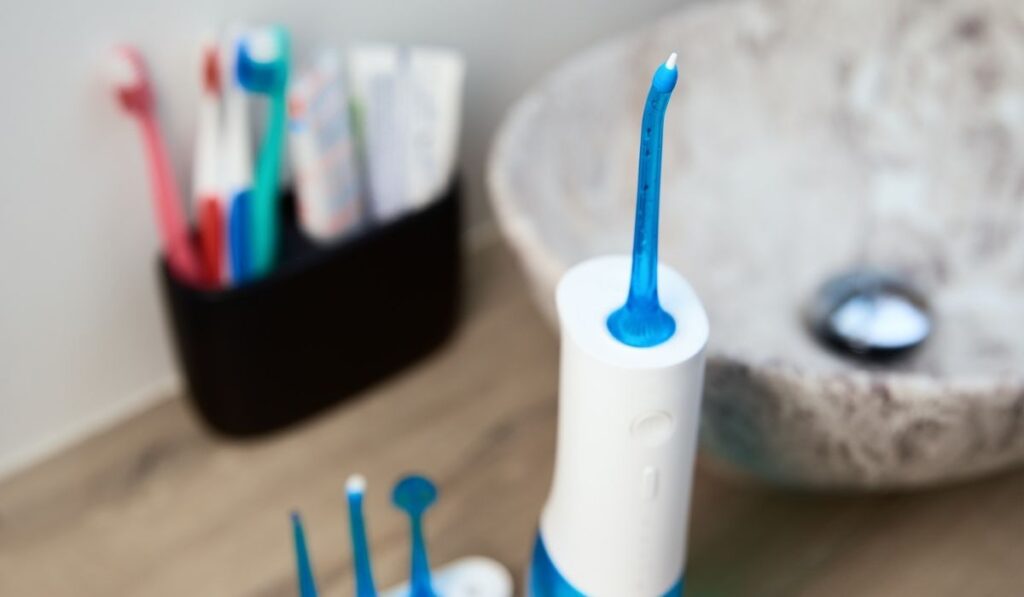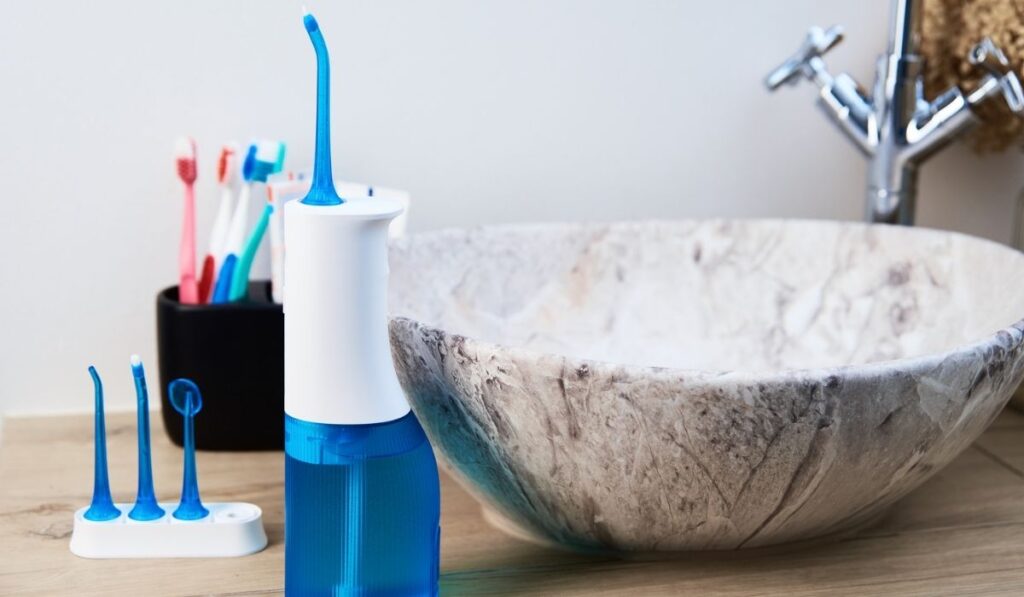The Waterpik is a brand of water flossing device, an oral health gadget that flushes out food particles and bacteria from your teeth, especially in places where the toothbrush cannot reach. Because it works completely differently from traditional string flossing, many people are skeptical about using it and wonder if it causes damage to the gums.
Waterpiks are gentler than string floss, and are highly effective at removing plaque hiding in between your teeth. A Waterpik will work best if you have braces, implants, crowns, or sensitive teeth. Note that it’s essential to keep the pressure low at first, then increase it only as needed.
Waterpiks typically won’t cause bleeding, even for sensitive gums. You can use them daily, and many adults and children who usually avoid flossing enjoy using Waterpiks instead. They aren’t bad for the gums or teeth, and even those with very sensitive gums or gum disease usually have no complaints about them.
Can Waterpiks Damage Your Gums?

All Waterpik Water Flosser devices (like the Waterpik Aquarius Professional (on Amazon), or the higher end Waterpik Cordless Advanced Water Flosser (also on Amazon), have received the American Dental Association (ADA) seal of approval and are commonly recommended by dentists (if you’ll use them regularly).
This means that the devices are safe and have been proven to be effective at removing the plaque along your gum line and in between the teeth, thus helping to decrease your risk of cavities forming.
Clinical studies have also found that Waterpiks reduce gum bleeding as well. The water flosser provided better results than traditional flossing methods did.
Carefully following your Waterpik’s instructions is very key to avoid causing damage to your gums. You should use warm water (but not hot) when flossing.
Also, don’t spray the warm water on areas where you have injuries or open mouth sores. Doing so will cause you pain. Experts strongly discourage this. You should avoid sensitive parts when flossing.
Also, if you set the pressure too high, it can cause damage to your gums. People who haven’t flossed in a long time may also feel some discomfort on the gums when using a Waterpik for the first time. However, this is usually nothing to worry about.
With consistent use, you should see a decrease in bleeding, inflammation, and discomfort. Should you experience any bleeding, swelling, prolonged discomfort, pain, or reddening from using Waterpik, consult your dentist.
Can You Safely Use a Waterpik Every Day?

Yes, you can safely use your Waterpik every day. The American Dental Association recommends brushing your teeth two times per day and flossing once daily to keep your oral health in great shape.
Your Waterpik is only replacing the traditional dental floss, so the recommendation stays the same.
It is recommended to floss, brush, then rinse (or use a Waterpik). This will increase the fluoride concentration being delivered through toothpaste, which helps strengthen your enamel and fight against tooth decay.
Follow these simple steps to use Waterpik Water Flosser safely every day:
- Fully charge your Waterpik
- Fill the Waterpik reservoir with warm water
- Press down firmly on the device’s base
- Choose a tip and click it into the handle. Most water flossers come with multiple tips
- Start with the lowest pressure setting
- place the tip into your mouth while leaning over the sink to avoid making a mess
- Turn it on
- Hold the handle at a 90-degree angle from your teeth and spray
- Let the water flow from your mouth into the sink below
- Direct the tip to the back of your teeth and work your way to the front, then to the spaces between them, and finally to your gum line
- Hold the tip in each area for about 3-5 seconds as you go
Finally, turn the device off and press the “eject” button to remove the tip when you’re done. Note that your Waterpik is not a replacement for other dental care practices like brushing your teeth, string flossing, and bi-annual dentist visits because they all serve different but complementary purposes.
The electric toothbrush brushes the external surfaces of the teeth. At the same time, the Waterpik cleans the gaps between your teeth but may not remove plaque or stuck-on particles, so it’s essential to continue to floss and receive professional cleanings regularly.
Using a Waterpik while practicing good oral care can help you keep your teeth and gums healthy.
Does It Hurt To Use a Waterpik?
Flossing with Waterpik is much kinder to your gums than traditional flossing, so it doesn’t and shouldn’t hurt at all. String flossing can be much more painful, especially if the space between your teeth is tight. The string can get stuck or snap and cut into your gum tissue.
Water flossing is more comfortable and has a soothing effect on your gums. Although some people report sensitivity with Waterpiks when used first, this is typically nothing serious. As long as you follow the directions, you’ll be fine.


